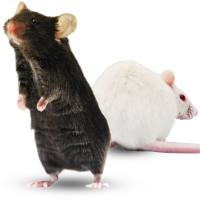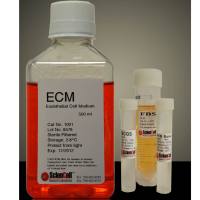Wound healing is a complex cascade that varies depending on the organ being studied. However, many components of the response are similar in different organs. Stromal-epithelial interactions are critical to wound healing in tissues in which epithelium and stroma are conjoined. The cornea provides a relatively pure model of stromal-epithelial interactions since there are no blood vessels, sebaceous glands, hair follicles, or other structures involved in the response (Fig. 1 ). There are Langerhan’s cells distributed within the epithelium, and sensory nerve endings innervate the basal epithelium, but otherwise the system is pure. Another advantage of the cornea is unambiguous localization of epithelial and stromal (keratocyte) cells. This is convenient when monitoring the expression of mRNAs and proteins by these cells during the wound-healing response. The tissue is also tough and stands up well to cryofixation and cryosectioning. This facilitates the use of antibodies in immunocytochemistry that cannot be used with formalin-fixed tissues. Terminal deoxyribonucleotidyl transferase-mediated dUTP-digoxigenin nick end labeling (TUNEL) assay to detect apoptosis can be performed on either cryofixed or formalin-fixed corneal sections. Finally, the cornea is amenable to a variety of manipulations, such as epithelial scrape, lamellar flap formation, microinjection of cytokines, exposure to toxic chemicals, and infection with microorganisms, that facilitate study of the wound-healing response. The most common animal models used in corneal wound-healing studies are the mouse and rabbit.
Fig. 1.
The cornea has epithelial (E), stromal (S), and endothelial (arrows) layers that are well delineated and unambiguous. Keratocytes (arrowheads) are the cells that are embedded in the stroma composed of collagen, glycosaminoglycans, and other connective-tissue components. Special stains are required to identify occasional Langerhan’s cells in the epithelium or sensory nerve trunks that run through the stroma and terminate adjacent to the basal epithelium. These cannot be detected in this H&E-stained section. This particular specimen is from human and has an approximate central thickness of 500 μm. Magnification: �100.






